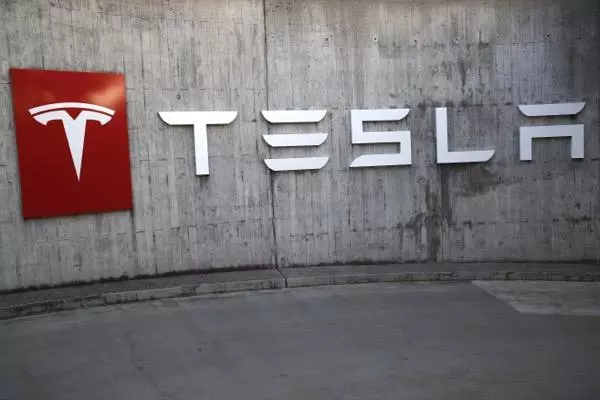Tesla's faces stiff automotive challenges amid intensifying EV competition
The electric vehicle pioneer reported significant revenue and profit declines in its first quarter, while competitors like BYD and Volkswagen gain market share globally.

Tesla's Q1 2025 financial performance disappoints
Tesla reported its first quarter (Q1) fiscal 2025 earnings on 22 April, revealing significant declines in revenue and net income compared to the previous year. The company's performance reflects challenges in its core automotive business, offset by growth in its energy and AI segments.
Revenue came in at $19.3 billion, a 9% decrease year-over-year (YoY) from $21.3 billion. Net income fell dramatically to $409 million, down 71% from $1.39 billion in Q1 2024. Earnings per share (EPS) of $0.27 (non-GAAP) missed analyst expectations of $0.41, while free cash flow reached $664 million.
The decline in revenue was primarily due to reduced vehicle deliveries and lower average selling prices, influenced by increased competition and production shifts. These results mark a challenging period for Tesla as it faces unprecedented competitive pressures in the global electric vehicles (EV) market.
Tesla delivered 336,681 vehicles in Q1 2025, representing a 13% drop YoY, while production reached 362,615 vehicles. The decrease in deliveries marks Tesla's weakest quarterly performance in nearly three years, attributed to production adjustments and intensified market competition.
Intensifying global EV competition impacts market share
As of mid-2025, Tesla faces intensifying competition in the global EV market, leading to a decline in its market share. The company's primary rivals include BYD (Build Your Dreams), Volkswagen, and NIO, each making significant strides in various regions.
BYD has emerged as Tesla's most formidable competitor, particularly in China and Europe. In April 2025, BYD outsold Tesla in Europe for the first time, delivering 7,231 battery electric vehicles (BEVs) compared to Tesla's 7,165 units. Globally, BYD's sales have surged, with the company delivering 376,930 passenger vehicles in May 2025 alone, including 204,369 BEVs. BYD's success is attributed to its diverse lineup of affordable EVs and strong domestic market presence.
Volkswagen has solidified its position as the top-selling EV brand in Europe. In April 2025, Tesla's sales in Europe plummeted by 49% year-over-year, while the overall EV market in the region grew by over 25%. Volkswagen's success is driven by its broad range of EV offerings and strong brand loyalty among European consumers.
NIO, a Chinese EV manufacturer, has gained traction with its focus on premium electric vehicles and innovative technologies like battery swapping. In May 2025, NIO, along with other Chinese EV makers like Li Auto and XPeng, collectively delivered 97,612 vehicles, marking a nearly 50% YoY increase. NIO's growth underscores the rising competition Tesla faces in the premium EV segment.
Strategic diversification beyond automotive
Despite challenges in its automotive segment, Tesla continues to invest in future growth areas as part of its strategic shift towards becoming a diversified technology company.
Energy storage deployments reached 10.4 GWh, indicating robust growth in this division. This segment has become increasingly important for Tesla's overall growth strategy, providing diversification away from the challenging automotive market.
The company is advancing its autonomous driving technology, with plans to launch a robotaxi service in Austin, Texas, later this month. This initiative represents Tesla's most ambitious attempt to monetise its self-driving capabilities and create new revenue streams beyond traditional vehicle sales.
These strategic initiatives reflect CEO Elon Musk's vision of transforming Tesla from purely an automotive company into a broader technology and energy company. However, the execution and commercial viability of these ventures remain to be proven at scale.
Having officially stepped back from his role leading the US Department of Government Efficiency (DOGE) on 30 May 2025, Musk is said to once again focus on Tesla and address the company’s recent 71% drop in profits.
Market challenges and pricing pressures
The EV market's rapid expansion has brought both opportunities and challenges for Tesla. While global EV adoption continues to accelerate, the increased competition has led to significant pricing pressures that are impacting Tesla's historically strong margins.
Tesla has implemented multiple price cuts across its vehicle lineup in various markets to maintain competitiveness and stimulate demand. These pricing actions have successfully boosted sales volumes in some regions but have come at the expense of profitability, as evidenced by the dramatic decline in net income.
The company faces particular challenges in China, its largest market outside the United States, where domestic competitors like BYD offer compelling alternatives at lower price points. European markets have also proven challenging, with established automotive brands successfully launching competitive EV offerings.
The pricing environment is expected to remain challenging as production capacity across the industry continues to expand and new entrants enter the market. Tesla's ability to maintain its premium positioning while competing on price will be crucial for future profitability.
Technology leadership under pressure
Tesla's technological advantages, particularly in battery technology and manufacturing efficiency, face increasing challenges from competitors who have closed the gap significantly in recent years.
Chinese manufacturers like BYD have developed competitive battery technologies and manufacturing capabilities, often at lower costs than Tesla. This has enabled them to offer vehicles with comparable range and performance at more attractive price points.
Traditional automakers have also invested heavily in EV technology and manufacturing, with companies like Volkswagen and Ford launching vehicles that compete directly with Tesla's offerings. The technological moats that once protected Tesla's market position are gradually eroding.
Autonomous driving technology remains an area where Tesla claims leadership, though competitors including Waymo and traditional automakers with partnerships like GM-Cruise are also making significant progress. The success of Tesla's upcoming robotaxi service will be crucial in validating this technological advantage.
Financial flexibility and investment strategy
Despite the challenging Q1 results, Tesla maintains a strong balance sheet with substantial cash reserves that provide flexibility for strategic investments and weathering competitive pressures.
The company's free cash flow of $664 million, while lower than previous periods, demonstrates Tesla's ability to generate cash even during challenging periods. This financial stability is crucial for funding ongoing investments in new technologies and manufacturing capacity.
Tesla's approach to capital allocation will be closely watched by investors, particularly the balance between investing in growth initiatives like the robotaxi service and energy storage business versus returning capital to shareholders or maintaining financial flexibility.
The company's stock performance has reflected investor concerns about the automotive business challenges, though the upcoming robotaxi launch is seen as a potential catalyst for renewed growth. However, regulatory hurdles and technical challenges remain significant risks for this initiative.
Tesla analyst rating and technical analysis
Tesla's stock has experienced a lot of volatility, with recent declines attributed to investor concerns over declining automotive sales and profitability. The upcoming robotaxi launch is seen as a potential catalyst for future growth, though regulatory hurdles remain.
Year-to-date the Tesla share price is down around 15% and seems to be short-term capped by its $367.71 late May peak. Since this high has been accompanied by negative divergence on the daily RSI, its April-to-June uptrend line and the 22 May low at $333.21 may soon be slipped through. In this case a retest of the March-to-early May highs at $303.94-to-$271.82 may ensue in the coming weeks.
Tesla daily candlestick chart

A rise and weekly chart close above the May peak at $367.71 would likely put the $400.00 region back on the map and perhaps also the mid-January high at $439.74.
Tesla has a TipRanks Smart Score of ‘4 Neutral’ and is rated as a ‘hold’ with 16 ’buy’, 10 ‘hold’ and 11 ‘sell’ recommendations (as of 03/06/2025).
Tesla TipRanks Smart Score chart

According to LSEG Data & Analytics, 8 analysts have a ‘strong buy’ recommendation for Tesla, 18 a ‘buy’, 17 a ‘hold’, 8 a ‘sell’ and 3 a ‘strong sell’ (as of 03/06/2025).
Tesla LSEG Data & Analytics chart

How to trade Tesla shares amid transformation
For investors considering Tesla positions, the company's transition from growth to mature competitor creates both opportunities and risks that require careful consideration.
- Research Tesla's diversification strategy, competitive positioning, and execution capabilities across its various business segments.
- Consider how the evolving EV market dynamics and increased competition might impact Tesla's future performance and valuation.
- Open an account with IG by visiting our website and completing the application process.
- Search for 'Tesla' or its ticker 'TSLA' on our trading platform or app.
- Implement risk management measures appropriate for a high-volatility growth stock facing significant competitive and operational challenges.
Spread betting and CFD trading offer flexible approaches to trading Tesla, allowing you to take positions on both rising and falling prices. Given Tesla's volatility and the binary nature of some of its strategic initiatives, these products can be valuable for expressing specific views on the company's direction.
For longer-term investors who believe in Tesla's transformation story beyond automotive, share dealing provides direct ownership in what could be a technology company with multiple growth drivers. However, investors should be prepared for continued volatility as the company navigates its competitive challenges and strategic transition.
